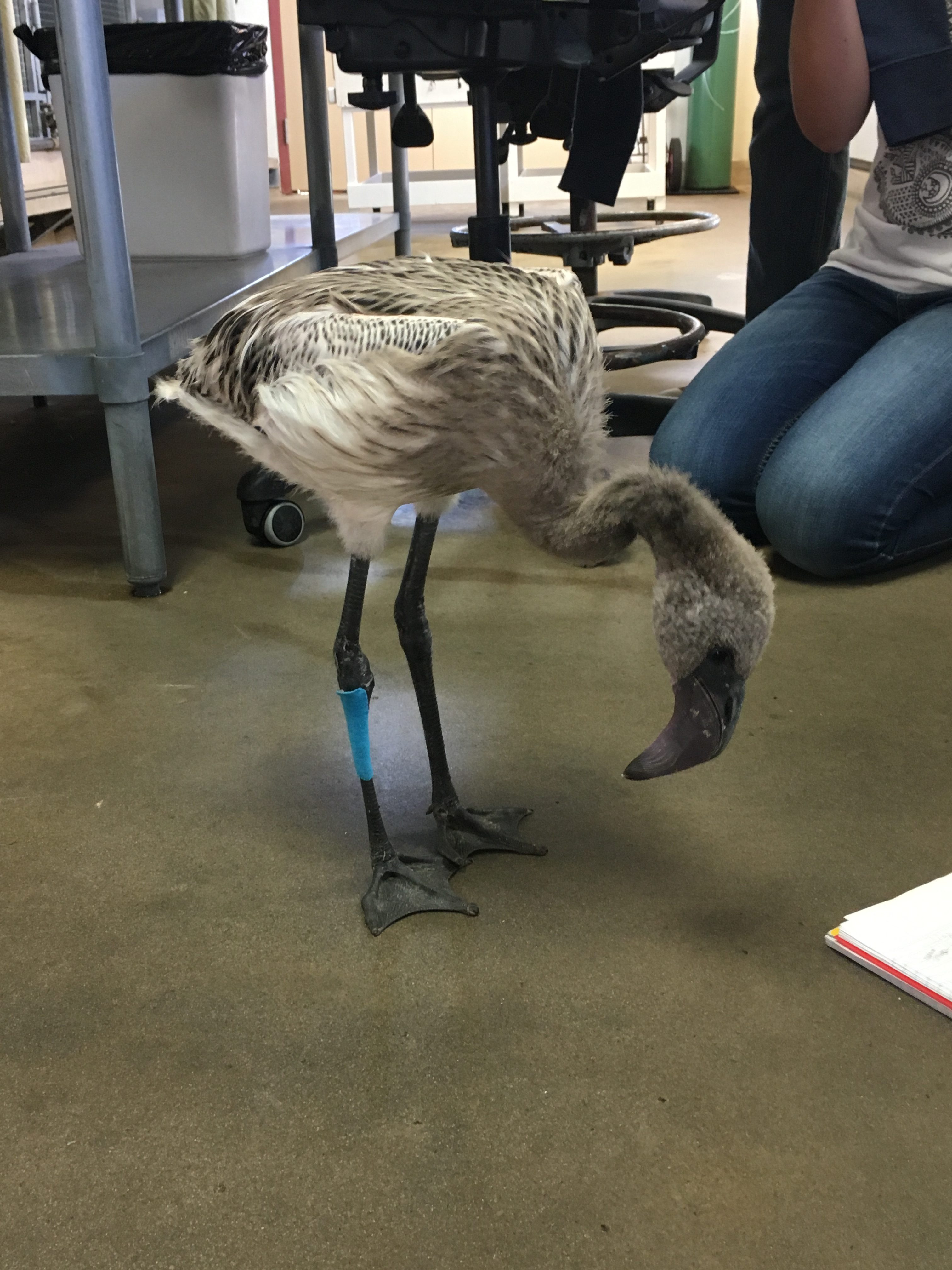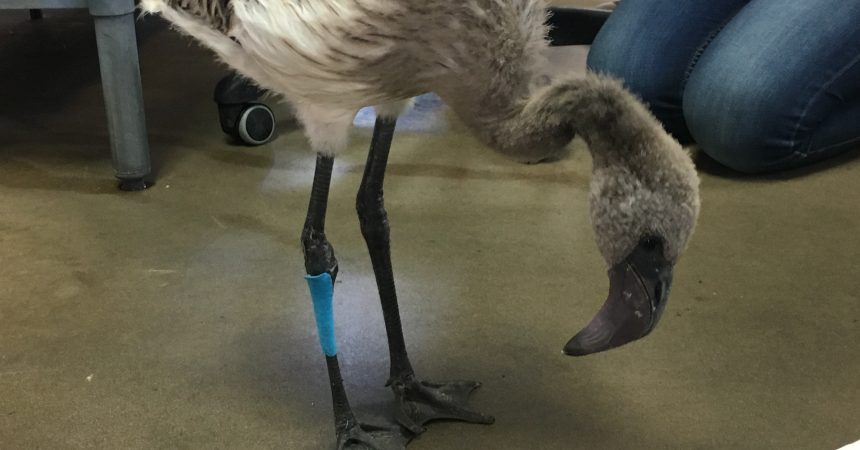Zoo InternQuest is a seven-week career exploration program for San Diego County high school juniors and seniors. Students have the unique opportunity to meet professionals working for the San Diego Zoo, Safari Park, and Institute for Conservation Research, learn about jobs, and the blog about their experience online. Follow their adventures here on the Zoo’s website!
 This week, interns met with Ann Knutson and Jessica Theule who are both senior keepers in the Avian Propagation Center at the San Diego Zoo. Ms. Knutson graduated from UCSD with a general biology degree, wanting to do research while at the same time, looking to make a difference in the world. She firmly believes in the idea of making an impact on an individual basis by talking to people, to educate them on the importance of conservation and wildlife. She believes that research is only important if there is a way to inform the public on its findings, otherwise the information won’t go anywhere.
This week, interns met with Ann Knutson and Jessica Theule who are both senior keepers in the Avian Propagation Center at the San Diego Zoo. Ms. Knutson graduated from UCSD with a general biology degree, wanting to do research while at the same time, looking to make a difference in the world. She firmly believes in the idea of making an impact on an individual basis by talking to people, to educate them on the importance of conservation and wildlife. She believes that research is only important if there is a way to inform the public on its findings, otherwise the information won’t go anywhere.
Ms. Knutson and Ms. Theule took interns inside the facility where they house the incubators for the eggs. They explained the importance of incubators in the development of the bird’s primary stages. On each incubator is a card with names and numbers for identification purposes, and the temperature inside the incubator in degrees Fahrenheit. The keepers explained that each species of bird requires a different amount of time in the incubator and a different temperature. For instance, a chicken egg needs to be incubated for 21 days whereas a kiwi egg needs 65 days at a much lower temperature. During the time that the egg is in the incubator, keepers need to track the eggs weight. The amount of weight that the egg loses is dependent on the humidity within the incubator. A five-gram egg should lose around 10-16% of its weight while in incubation. They weigh the eggs twice a week, and alter the humidity depending on how quickly the eggs are losing weight.
The keepers explained that they get most of their birds from on zoo grounds to help them if they need to be hand reared. This is usually because the eggs were either abandoned, or because they need to control breeding of a certain species. In some cases, they need to know what the gender of the bird is before they hatch. In order to do this, they must sand off the shell, careful not to hit the membrane, and draw blood from the egg that can be analyzed.
Ms. Theule demonstrated candling, which is a method used to study the growth of the embryo inside the egg. She turned off the lights in the room and turned on a machine that emitted light, and held the egg up to the light so that we could see what was inside the egg’s shell. She explained that what she is looking at is the size of the air cell. If the size doesn’t fluctuate from day to day, they know that something could be wrong with the embryo.
After learning about the first stages in development of the eggs, interns got to meet two lesser flamingos. Ms. Knutson explained how to feed the birds by using the targets in their mouth. The target is normally for the mother and father to help feed their babies to properly aim into the mouth. Young birds cannot thermoregulate, so they need warm food to help them maintain a healthy temperature. Flamingos are grey when they are first born, but as they mature, they slowly begin to turn pink. Ms. Knutson gently lifted one of the flamingo’s wings to show the beginning transitions from grey to pink. The keepers were tasked with taking care of these flamingos because they are known for having unsuccessful fertile eggs. One unique adaptation of the flamingo is the shape of their beak. Their beaks are bent so that when their heads are down in the water, they can filter food from the water though their beak.
In addition, interns got the opportunity to talk to Ms. Knutson about how her job is helping the greater world. She used the example from the recent decline in Asian vultures, which has led to a rabies epidemic. Vultures circle and consume animal carcasses in the wild. Rangers would use this behavior as a signal for nearby poaching sites. Poachers have started to kill vultures so that they cannot give the rangers a heads up on the activity, allowing the criminals a better chance to get away. One of the problems that arose from the decline of vultures was that local dogs started to eat the dead animals and contract rabies. These dogs would then bring the rabies back to the villages and would transmit the disease to the human population. This disease, got thousands of people sick, which led to millions of dollars spent in health care expenses. Ms. Knutson knows that this is a huge problem and wanted the public to know more about this issue. She was able to acquire grants to have more research done on the issue, in order to spread awareness to other wildlife organizations, and to be able to educate the public.
There are ways that we as a community can help. Educating ourselves on the importance of birds and other animals in the world is the first step towards living a more thoughtful and sustainable lifestyle. It’s about understanding the trickle down effect that one species has on an entire ecosystem, and applying some solutions we can do at home to help them. Using less paper products, saving water, and buying cruelty free products are all ways that an individual can help.
Birds play a major role in the circle of life that most people don’t pay a lot of attention too. It is because of advocates like Ms. Knutson and Ms. Theule, that there is more hope. By helping people to become educated on how important birds are to the environment, and what major roles they play in the world’s ever changing ecosystems.
Teah, Real World
Week Three, Fall Session 2016


